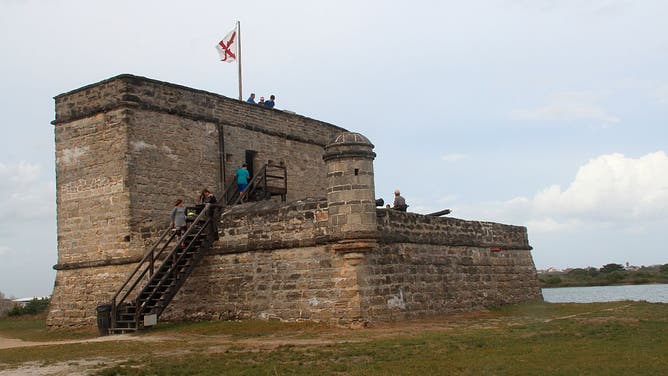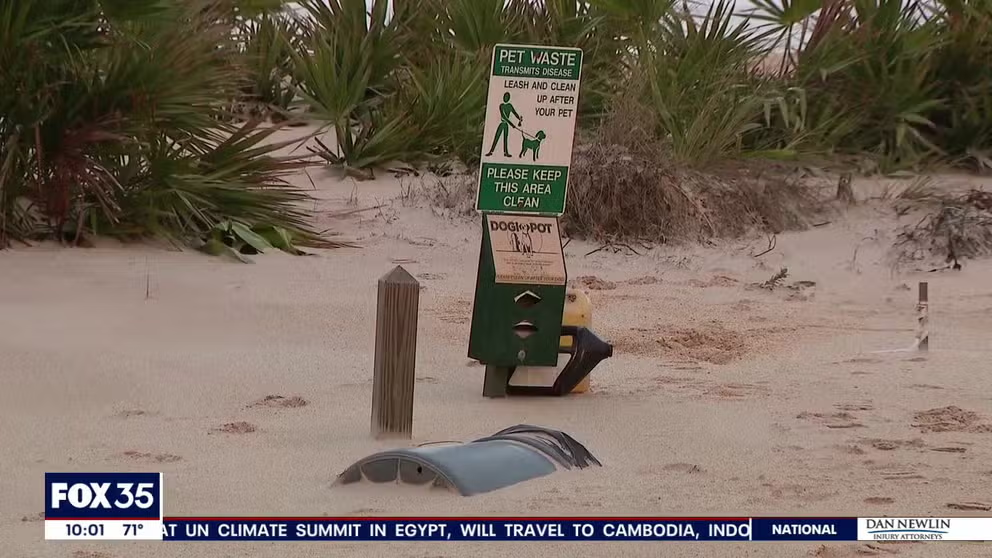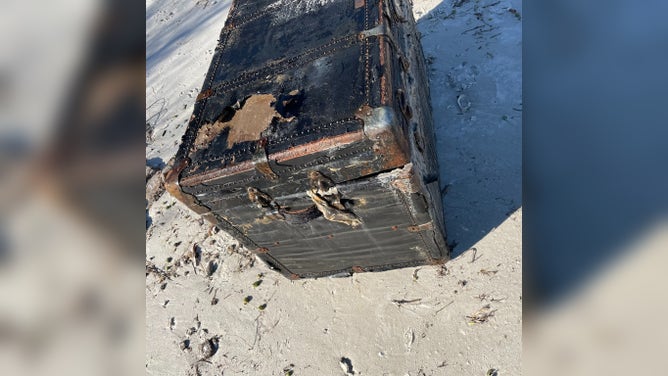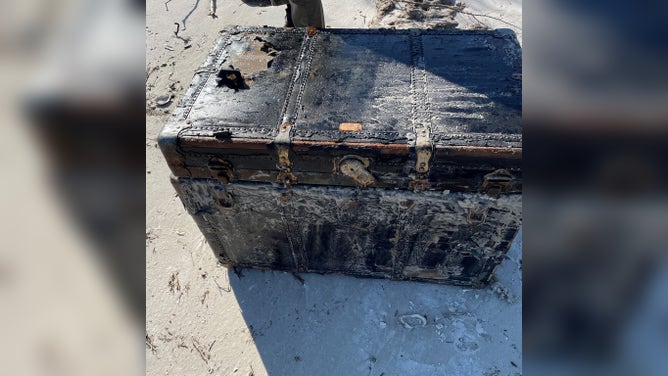Historical trunk washes ashore on Florida beach after Hurricane Nicole
The National Park Service said they’ll try to find the original owners of the trunk.
Nicole buries Florida homes in feet of sand
Hurricane Nicole eroded mile after mile of sand dunes and beach under seaside homes. Some homeowners in Flagler County, Florida know exactly where that sand went.
ST. AUGUSTINE, Fla. – Discoveries that may not have been possible without the waves and wind from Hurricane Nicole are still being found along Florida’s east coast, more than a week after the late-season Category 1 storm.
The latest discovery of what appears to be an old trunk was found not too far from the nation’s oldest city on an undeveloped island’s beach.
A local resident on the hunt to capture a picturesque photo of the rising sun on Friday morning stumbled upon the trunk that he said appeared to have a sandbag tied to it.
The old trunk resembled a sight only seen in pirate movies, and the Florida resident notified local authorities about the find.
A National Park Service team from nearby Fort Matanzas National Monument responded and, to everyone’s dismay, said nothing of value was found in the trunk.
HURRICANE NICOLE UNEARTHS HUMAN REMAINS ALONG FLORIDA’S TREASURE COAST
"While nothing of interest was found within this trunk, it itself is a unique piece of history. What we found today is a Vintage 1930s Steamer Trunk," the NPS stated.
The federal team is still unsure where the item came from and said law enforcement would do their best to try to find the owner.
Authorities will have few clues to go by but said the manufacturer is believed to be L. Goldsmith & Son of Newark, New Jersey.

Fort Matanzas National Monument, Spanish fort built in 1742, Florida Atlantic coast.
(Education Images/Universal Images Group via Getty Images / Getty Images)
Discoveries after significant storms are a common occurrence along what is known as the First Coast and further south along Peninsula, where the Treasure Coast is located.
The Florida Peninsula was home to some of the first European settlements, which left behind countless artifacts that continue to be found today.
About 150 miles south of the most recent find, a beachgoer stumbled upon human remains in Martin County during the immediate aftermath of Nicole.
REMNANTS OF NICOLE EXIT EASTERN SEABOARD AFTER HISTORIC LATE-SEASON HURRICANE STRIKE
Archeologists have tied the bones to a historical Native American burial mound that could date as far back as 500 B.C.
"It was a great place to live back then and is a great place to live today. So, it is not a surprise that people are making discoveries," said Emma Dietrich, an archeologist at the Florida Public Archeology Network.
People who come across artifacts and other historical items during the storm's aftermath are encouraged to report findings to the State of Florida at 850-245-6444 or their regional office of the Florida Public Archeology Network.

Nicole made landfall just south of Vero Beach, Florida, as a Category 1 hurricane at 3 a.m. Eastern on Thursday, Nov. 10, 2022.
(FOX Weather)



